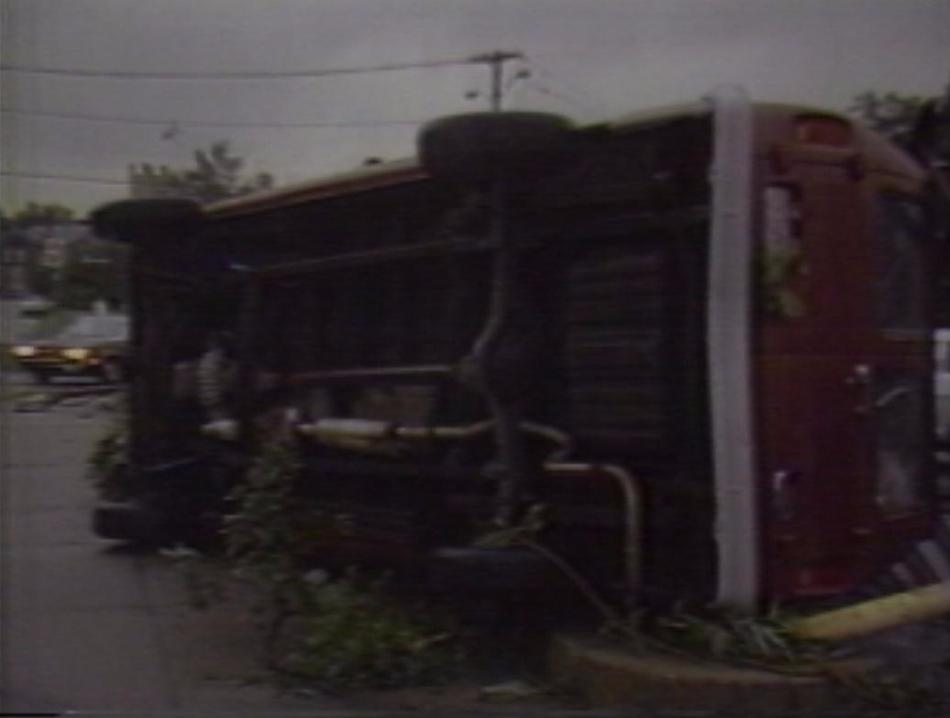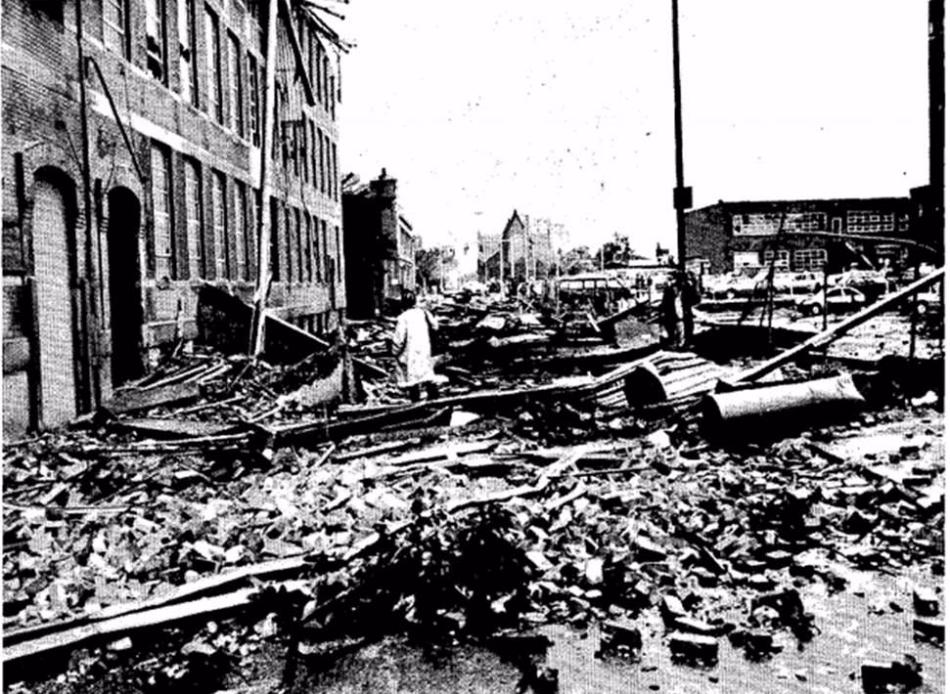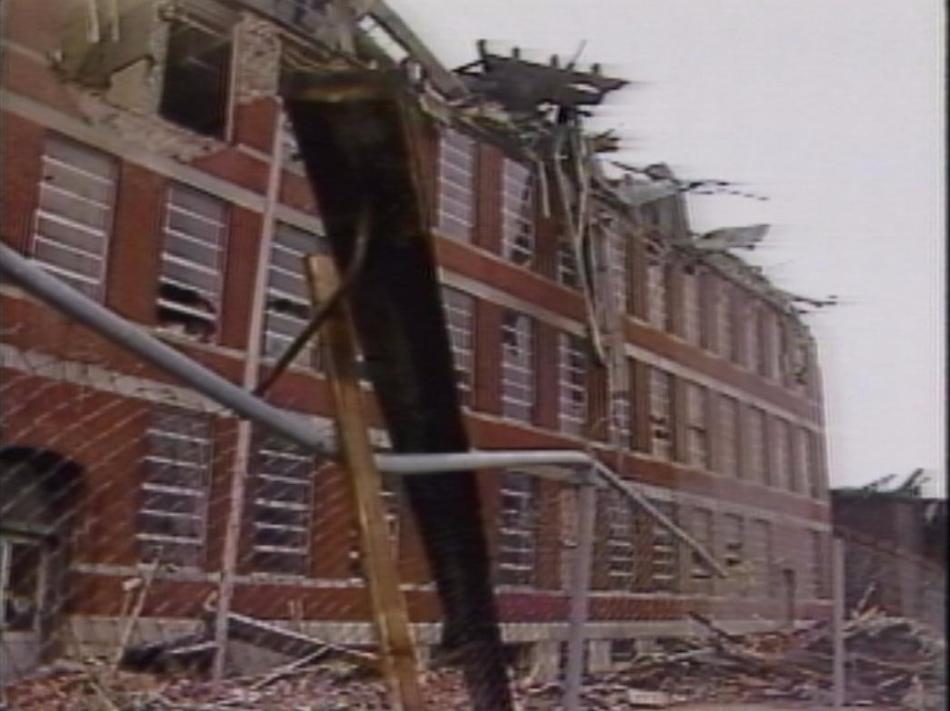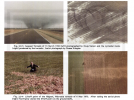- Thread starter
- #8,901
locomusic01
Member
Everybody talks about ground scouring being so impressive, but pfft.. big deal. If your tornado didn't produce water scouring, I don't even wanna hear about it.


Follow along with the video below to see how to install our site as a web app on your home screen.
Note: This feature may not be available in some browsers.


A car being embedded in a wall inside a building? That's something new.I hope that there was a picture of this Gordini. This was incredible damage.
Just realized I totally forgot about the other undocumented tornadoes on this day. The Homer-Salix F4 appears to have been part of a family of at least three tornadoes, the paths of which were a bit squirrely. The first tornado probably wasn't that significant, but the third reportedly produced substantial ground scouring + debarking and threw a horse about three-quarters of a mile. There might've been a final tornado in Monona County down by Mapleton, but it's unclear if it was actually tornadic or not.The day before, June 11, there are reports of a massive tornado a few miles south of Bowdle, SD. One report claimed it was nearly a mile wide, but who knows. It apparently traveled quite slowly and didn't hit anything other than trees so I doubt there's much more information out there.

The most interesting "lost tornado" you've discovered is that wedge up by Bowdle. Sounds like it was basically a prototype of the 2010 EF4.Just realized I totally forgot about the other undocumented tornadoes on this day. The Homer-Salix F4 appears to have been part of a family of at least three tornadoes, the paths of which were a bit squirrely. The first tornado probably wasn't that significant, but the third reportedly produced substantial ground scouring + debarking and threw a horse about three-quarters of a mile. There might've been a final tornado in Monona County down by Mapleton, but it's unclear if it was actually tornadic or not.

There was also another tornado - maybe multiple tornadoes based on eyewitness accounts - preceding the Herman, NE F4 on June 13. Still working on mapping that out though.


I was going through some 20th Century Reanalysis Data for the June 1st, 1903 Gainesville, Georgia tornado and came across a few interesting things.
First of all, this tornado is quite a climatological outlier, as tornadoes that significant that are not tropical-cyclone induced are very rare in that region for that time of year.
Second, despite 20th Century Reanalysis depicting a large warm sector, this was the only recorded significant tornado to occur in the warm sector that day. Not only that, but the tornado occurred far away from the cold front or triple point, suggesting that it might have been the result of some other mesoscale feature.

However, upon further analysis of the image above, you can see that the Gainesville tornado occurred very close to a significant wind shift that was located to the northeast of Atlanta. This was probably caused by some type of front that "parked" along that area, which increased the lower-level backing of winds, the moisture content, the lower-level instability, and as a result, overall tornado potential in that area alone. If this data is to be taken for granted, we can infer that the tornado was probably induced by a warm front of some kind. This type of meteorological setup is eerily similar to the Vilonia Tornado of April 27th, 2014.
View attachment 16963
In addition, eyewitness accounts reported that a lot of rain and flooding was associated with the tornado's passage, and the specific sequence of events (rain, then lightning, then brief lull, and then tornado) indicated that a typical supercell thunderstorm with a hook echo at the southeastern side of the storm was responsible. Plus, the funnel itself wasn't well described, but eyewitnesses only stated that it suddenly became dark (an indication of a low-based and large mesocyclone) before the tornado struck. This indicates that the storm was very low-based, another characteristic of a tornadic supercell near a warm front. These further solidify the notion that this tornado was induced by the front.










There are so many incredible photos from that event it's hard to keep track of which ones are from which sequences/photographers lol. Of course it doesn't help that my Red River Outbreak folder is a disorganized mess. Some impressive shots from a few of the other tornadoes too.Found 3 of these from that incredible Wichita Falls sequence; anyone have the full collection?
Once upon a time there was a full sequence of at least 12 of these photos; I've only been able to find the 3 above on Pinterest. Probably a website out there that had all of them but it's since gone down.There are so many incredible photos from that event it's hard to keep track of which ones are from which sequences/photographers lol. Of course it doesn't help that my Red River Outbreak folder is a disorganized mess. Some impressive shots from a few of the other tornadoes too.
Anyway, after I'm done working I'll go through them and post what I have.
So, the F4 tornado that struck Warner Robbins Air Force Base official path length is only a mile, and apparently several other tornadoes from the outbreak that spawned had paths lengths of no more than a mile. Yeah, it's possible they weren't all that well documented but worth a note.I can't really think of any comparable event off-hand, at least among official/widely acknowledged F5s. Elie and Wichita Falls '64 were both only a few miles long, but they were on the ground for better than half an hour. There was an F4 that hit Garland, TX during the May 1927 outbreak that basically touched down, immediately leveled a few blocks and then dissipated, but definitely nothing on the level of San Justo.
I'm not sure it's that uncommon for tornadoes to intensify extremely quickly after touchdown, but flaring up and then dissipating so quickly is fascinating. Astronomically bad luck to have happened right over a densely populated area. I haven't looked into the conditions that day but I'm assuming instability must've been pretty extreme.
I grew up in Warner Robins so I might be able to dig up some info on that tornado (although I don't live there anymore). It's an interesting event, being one of only two violent tornadoes south of the fall line in Georgia.So, the F4 tornado that struck Warner Robbins Air Force Base official path length is only a mile, and apparently several other tornadoes from the outbreak that spawned had paths lengths of no more than a mile. Yeah, it's possible they weren't all that well documented but worth a note.














